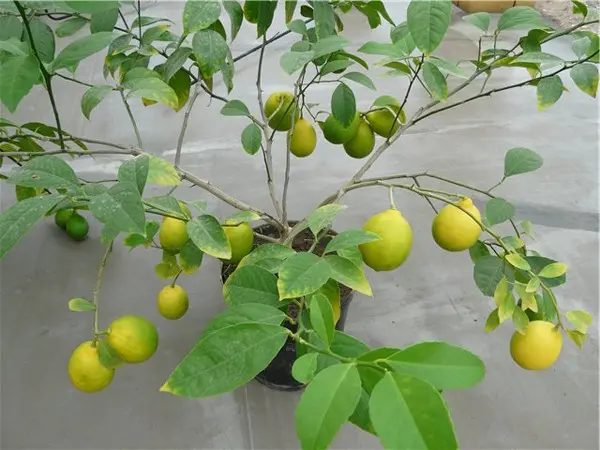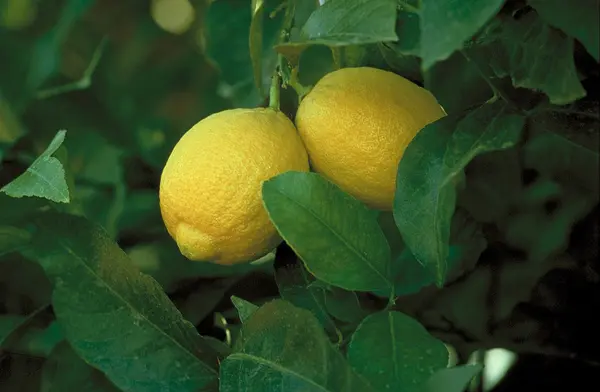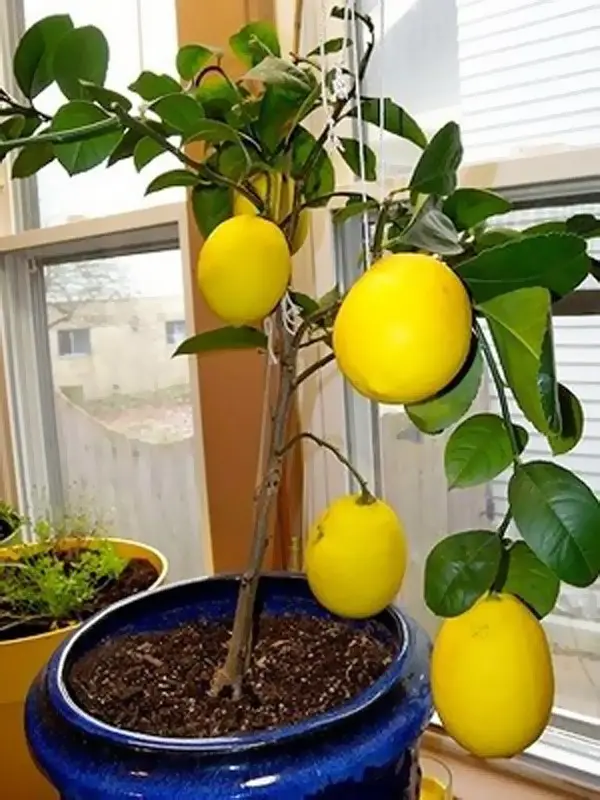Contents
Lemon is one of the most common types of citrus fruits. It can be found more often than others in the houses and apartments of both experienced gardeners and ordinary citizens, who were attracted by this fruit with its exotic appearance and unpretentiousness in care. In addition, many are attracted by the beneficial properties of the fruits of lemon trees and the desire to have an inexhaustible source of vitamins takes over. Among the most popular are the Novogruzinsky lemon, as well as the Lisbon and Genoa varieties. Let’s consider them in more detail.
Novogruzinsky
This variety is relatively young, bred in the middle of the last century at the Sukhumi Experimental Station. In Abkhazia and Georgia, Novogruzinsky lemon was one of the best breeding species in terms of yield and taste characteristics of fruits.
Description
Lemon Novogruzinsky is considered a giant among his “brothers”, because the height of the tree can be up to 2 meters (and often higher). In nature, it grows up to 5 meters in height.
At home, the tree has a spreading beautiful crown with many thorns on the trunk and branches (see the photo for an example of a young plant). In this regard, in youth it is desirable to carry out the formation of the crown. The leaves are light green in color, smooth and elongated (length, on average, 12 cm, and width – up to 5 cm), have a pleasant delicate aroma.

Novogruzinsky loves sunlight, so you can place it on the southern windows, slightly shading, protecting the plant from direct sunlight.
It blooms with large white flowers with a slight purple tint. It is worth noting that flowering begins later than other species by 1-2 years. Fruits can be either round or elongated oval, weighing up to 150 g, with a thin glossy peel (up to 5 mm) of a light yellow hue and pulp with a pleasant taste.
Advantages of the variety
Novogruzinsky can bloom and bear fruit 2-3 times a year (remontant variety). If the tree is well looked after, agricultural technology is carried out on time and correctly, then 100-200 lemons a year can be harvested from one lemon tree. Moreover, they are practically boneless.
The variety was bred for the southern regions, but it perfectly adapts to the more severe conditions of the middle latitudes and does not feel any discomfort, located in some Moscow apartment.
Relatively tall trees of this species, due to its natural beauty, are often used in the interior of offices, rest houses or sanatoriums: after all, a sprawling tall plant with many bright fruits can always decorate any room favorably.
Novogruzinsky is considered one of the most undemanding to growing conditions, so it is very popular among fans of exotic plants.
Lisbon
The birthplace of the Lisbon lemon (and in North Africa it is also called “Portugal”) is Portugal, from which it came to Australia in 1824, where it received further development and fame. But its first description was carried out in Massachusetts in 1843. In professional circles, the Gallego species is considered the ancestor of this hybrid.
Description
Lemon Lisbon is a fast-growing, rather tall tree, growing on average up to 1,6 m, and some specimens up to 2 m.
It has a dense crown with strong strong branches with many thorns. The leaf is wide, elongated, with a characteristic pointed end. The trees have a pleasant strong “lemon” smell.
For stable growth and development, it requires constant bright light, so the tree should be placed near the southern windows, but the plant must be protected from direct sunlight, avoiding foliage burns.
Lisbon blooms early – flowers appear already in the 3rd year of growth. Already for the 5th year, you can harvest up to 60 copies per year, while they are quite heavy – 150 g each, and some can weigh up to 500 g. The fruits are yellow, have a classic oval shape with a slightly beveled top and a small depression (pictured ).

The peel is thick, up to 7 mm, with a smooth, slightly ribbed surface. The pulp has a pleasant sour taste.
Advantages of the variety
Like Novogruzinsky, Lisbon is a remontant variety and bears fruit several times a year, which greatly pleases the owners of this tree. Moreover, fruits are considered one of the leaders in terms of quality and taste characteristics of fruits.
Lisbon has proven itself to be one of the most durable lemon hybrids. It tolerates heat, drought, and low temperatures with equal success. In addition, it adapts well to the dry air of the apartment.
With proper care and the right place to grow, the Lisbon tree will thank you with regular fruiting.
Genoa
The variety comes from Italian Genoa, emigrated in 1875 to California and in 1881 to Florida (USA), where it became very popular. From the USA, this hybrid came to South America and further to India. Breeders believe that this is a late hybrid of the “Eureka” variety.
Description
Genoa is a dwarf tree that grows up to a maximum of 1,3 m. A distinctive feature of this species is that there are no thorns or there are very few of them. (this is clearly visible in the photo). The leaf cover is dense, with large green ovate leaves of a wide elongated shape up to 12 cm long and up to 7 cm wide.

Genoa is a lemon that loves the sun and should be placed on the south or southeast windows, but shading from direct sunlight.
It begins to bloom at 2-3 years of life, and bear fruit – at 4-5 years. It is worth noting that the fruits are not large – their weight does not exceed an average of 100-120 g. The form is traditional for lemons, slightly elongated with a smooth, rough greenish-yellow peel and fragrant, sour, but pleasant to the taste, pulp. For 4 years, an average of 50 fruits grow on a tree.
Advantages of the variety
Like all of the above varieties, Genoa is a lemon that blooms and bears fruit several times a year. A distinctive feature is its resistance to adverse conditions, as well as increased productivity. With proper care, up to 180 fruits can be harvested from one tree per year. At the same time, the fruits are highly valued because of their taste characteristics. Including the peel – it is edible in Genoa and does not taste bitter, like in most other species.
Lemon hybrids have been bred by breeders in a great variety, but for the most part they require the same care with minor variations. The main requirement of this type of plant is abundant sunlight, therefore, plant pots should be placed on the south side of the house or apartment. However, most lemon varieties do not tolerate direct sunlight, so the plants need to be shaded.
When planning to get a lemon tree, study the description of species and hybrids, review information on how to care for the plant throughout the year, including:
- timing and number of irrigations;
- when and how to prune;
- top dressing and fertilizers;
- causes of possible diseases and methods of their treatment;
- breeding methods.
And only after studying all the subtleties and nuances, choose a hybrid that best suits the conditions in your apartment or house. It depends on the right choice how the tree will develop and its yield – the main goal of any gardener.
Video “Care for homemade lemons”
This video will show you how to care for lemon varieties at home.









